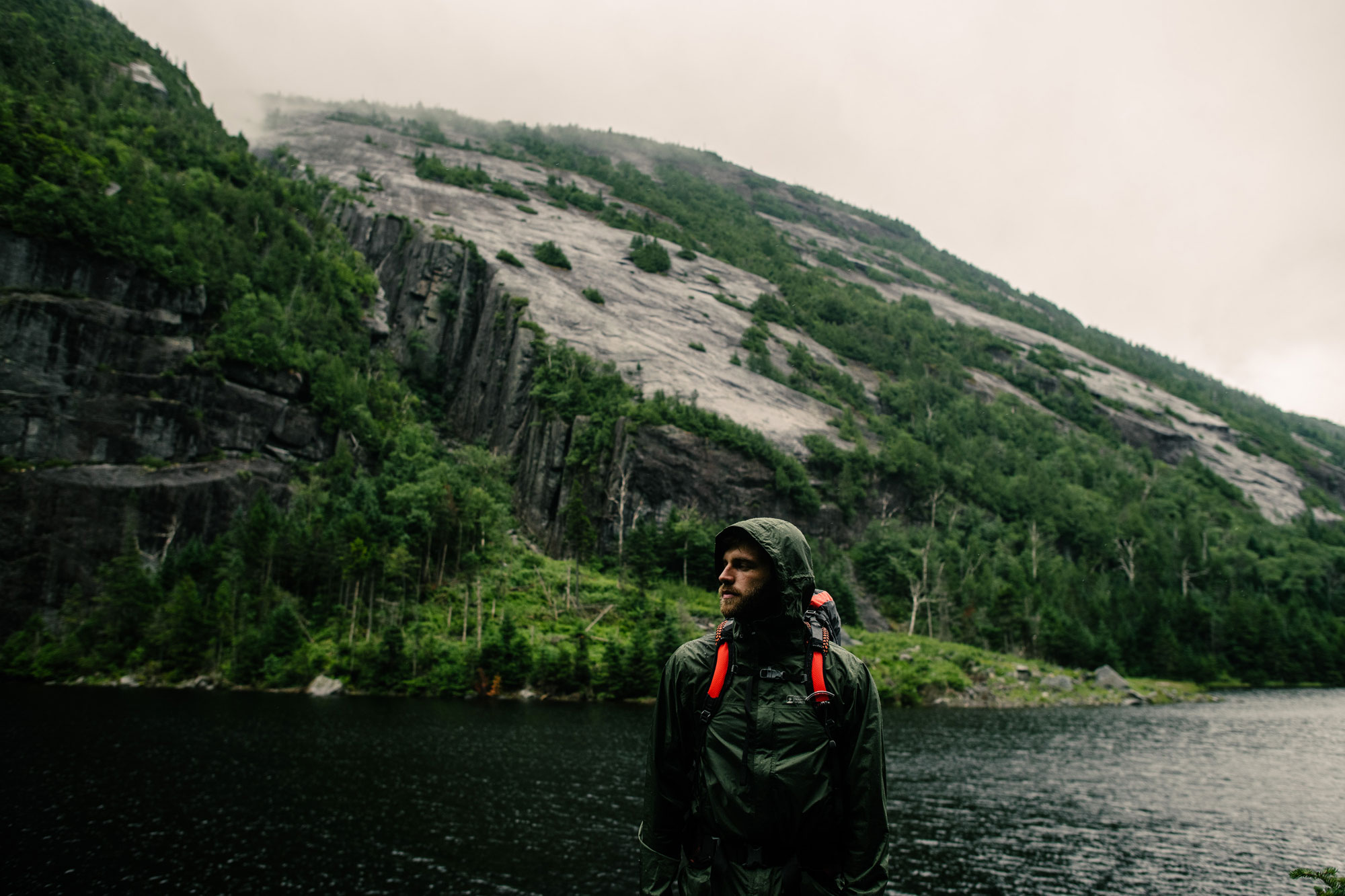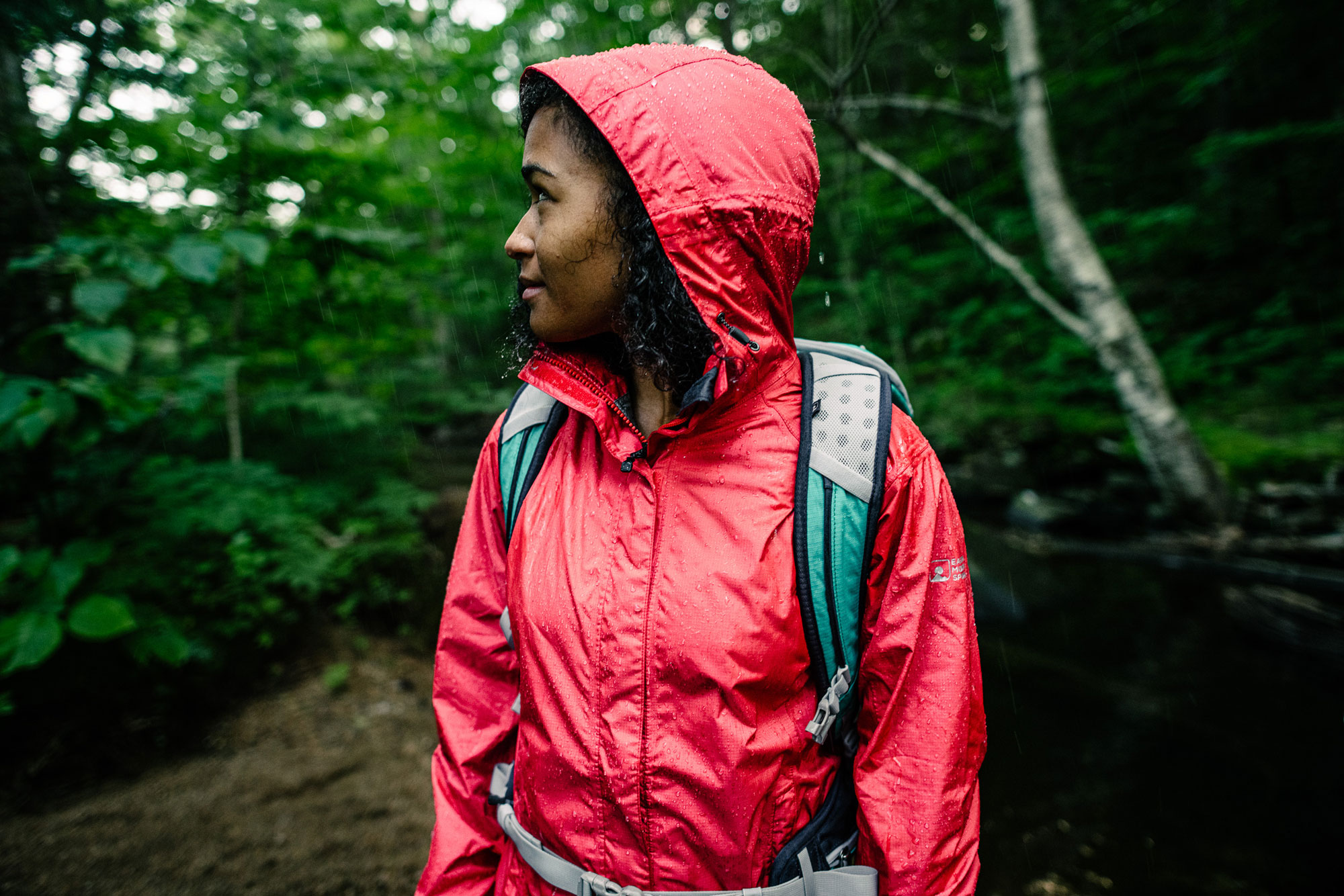If we in the Northeast never hiked in the rain, we wouldn’t be doing a whole lot of hiking would we? It is still possible to have an enjoyable hiking, backpacking, or camping trip in wet weather, but it certainly comes with its challenges. One major challenge is keeping you and your gear from becoming soaking wet, which is not only a safety concern for clothing and sleeping bags, but can also make for a heavy, sloppy, and uncomfortable trip. Rain jackets and pants are easy to think of for traveling in the wet, but when it comes to keeping your pack and its contents waterproof there is more than just one option.

Option 1: The Pack Cover
So here’s an obvious solution to keeping your pack dry: Wrap it in a waterproof material! Pack covers are a simple and effective way to keep your pack and its contents out of the elements.
These covers come in a variety of sizes that approximately match the size of your pack (so you may need one for your backpacking pack and one for your daypack, for example), with a shape not unlike a giant, oblong shower cap. To that effect, what holds the cover onto the pack is the elastic stretched along the edge. Simply stretch it on when it’s raining, and peel it off when it’s time to get into your pack.
The main limitation with rain covers is that you need to take them off to access anything that is inside your backpack or its pockets, exposing everything to the rain or snow when you do. Of course, if you’re slick and organized you can still minimize the time that the cover is off.
Another consideration when using a rain cover is that although it will keep your backpack dry, it could make you slightly wetter, as the water runs off and onto your shoulders. That in mind, if you have a pack cover on, you’ll likely have a rain jacket on as well.

Option 2: A Pack Liner
There are certain activities and situations where having a cover on the outside of your backpack is not the best option. This could include trips where wet weather is a possibility but not too certain, and more commonly when you will be carrying things on the outside of your pack, like trekking poles or an ice axe (Sharp items are best kept apart from the waterproof fabrics for best results).
Enter the pack liner bag. This is essentially the same as the pack cover, besides two things. The first is obviously that these line the inside of your backpack’s main compartment, with all of your things inside of the liner. The second is that these liner bags tend to have more of a closure on them, making them less like shower caps and more like a roll-top dry bag that you’d see on a river trip, only thinner.
Using a liner means you can use all of your pockets and move axes on and off the pack at will, and while the backpack itself may get wet (and potentially heavy), the important things stay dry on the inside.

Option 3: Dry Bags
Of course there is a great difference between water resistance against rain and complete waterproofing. This is the domain of the dry bag. These are specialized bags and backpacks designed for use in water like in paddling sports, where complete immersion in water must be accounted for.
Dry bags are typically made from very heavy duty PVC and polyester with a roll-top closure, which create a dependably dry interior for whatever fits inside. While pack covers and liner bags are waterproofing additions to backpacks, a proper dry bag like the NRS Bill’s Bag are more like a waterproof sack with additions to mimic a backpack.
These are not what you’d carry on a backpacking trip, as they are not made for carrying comfort, but they will keep things dry better than any alternative and are great options for car camping or paddling trips where you want durable waterproofing and won’t be carrying them on your back for extended periods.
Sean Coit
Sean is a New Hampshire native who can be found looking for remote ski lines and climbing objectives when not working for the EMS Climbing School. Talking about gear makes up a large percentage of Sean’s conversations, and occasionally those ramblings will make their way into print.




